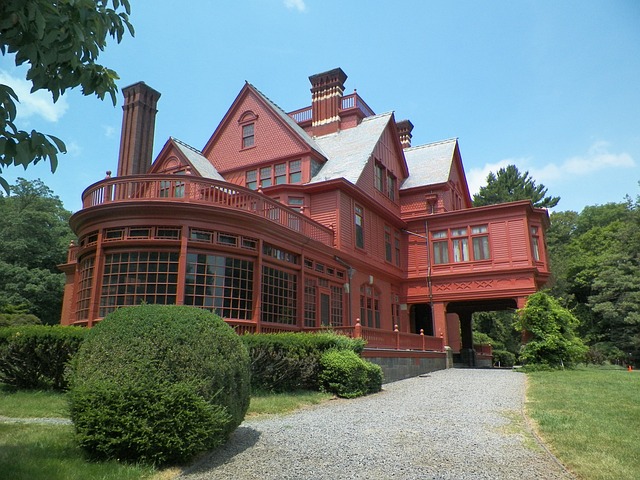Gloucester County, New Jersey, is a rich tapestry of both natural and historical attractions. It boasts the ecologically diverse Mullica River and its surroundings as significant conservation sites with high biodiversity, offering habitats for numerous plant and animal species, including rare and endemic ones. Avian enthusiasts are particularly drawn to the area's warblers, herons, and eagles, which thrive in the wetlands that are crucial for their nesting and feeding. The Mullica River Watershed encompasses a variety of landscapes, from wooded areas to open fields, all contributing to the region's ecological significance. Gloucester County has established parks and nature reserves like the Mullica River Management Area, which protect local biodiversity and provide recreational opportunities for outdoor lovers. The county also serves as a repository of American historical heritage with sites that offer a window into colonial and revolutionary periods, including the Crosswicks Estate and Fort Mott State Park, which hold strategic importance from their use during various wars. Additionally, Gloucester County offers outdoor activities such as hiking in the Wharton State Forest, the largest stand of pine forests in the U.S., and family-friendly attractions like Double Trouble State Park with its lighthouse and historical village. For nature enthusiasts, the county's national parks are crucial habitats for wildlife, including the great blue heron and woodpecker, offering opportunities for optimal wildlife viewing. Gloucester County is committed to environmental preservation and ecological conservation, with initiatives like habitat restoration and invasive species management, reflecting its dedication to sustainable practices and stewardship of New Jersey's natural and historical heritage.
Gloucester County, New Jersey, offers a rich tapestry of natural wonders and historical significance within its national park landscapes. This article delves into the diverse ecosystems of the Mullica River, showcasing the area’s biodiversity, and highlights the cultural heritage sites that chronicle the region’s past. Discover a comprehensive guide to outdoor activities suitable for all ages across Gloucester County’s national parks, and learn how to identify and observe the local fauna unique to these environments. Additionally, gain insights into the ongoing preservation efforts and environmental stewardship initiatives that are crucial to maintaining the integrity of these natural and historical treasures in New Jersey. Join us as we explore the many facets of Gloucester County’s national parks, a testament to both natural beauty and cultural history.
- Exploring the Rich Biodiversity of the Mullica River and Its Surroundings in Gloucester County, New Jersey
- The Historical Significance and Cultural Heritage Sites in Gloucester County's National Park NJ
- A Guide to Outdoor Activities for All Ages at the National Parks in Gloucester County, NJ
- Wildlife Spotting: Identifying and Observing Local Fauna in the National Parks of Gloucester County, New Jersey
- Preservation Efforts and Environmental Stewardship in Gloucester County's National Parks, NJ
Exploring the Rich Biodiversity of the Mullica River and Its Surroundings in Gloucester County, New Jersey

Situated within the diverse ecosystems of Gloucester County, New Jersey, the Mullica River and its surroundings present a captivating window into the state’s rich biodiversity. This winding waterway carves through lush wetlands, offering visitors an opportunity to witness a variety of plant and animal species that thrive in this unique habitat. The area is home to numerous rare and endemic species, highlighting its significance as a conservation site. Bird enthusiasts are particularly drawn to the Mullica for its abundance of avian life; here, one can observe the vibrant plumage of warblers, the elegant wading of herons, and the majestic flight of eagles. The river’s wetlands serve as a critical habitat for these creatures, providing essential nesting and feeding grounds.
Furthermore, the Mullica River Watershed encompasses a variety of landscapes that range from dense forests to open fields, each contributing to the area’s ecological richness. Gloucester County’s commitment to preserving this natural treasure is evident in the establishment of parks and nature reserves like the New Jersey Division of Fish and Wildlife’s Mullica River Management Area. This dedication not only safeguards the biodiversity of the region but also offers outdoor enthusiasts a plethora of recreational activities, from hiking and kayaking to wildlife observation and photography. The Mullica River and its surroundings in Gloucester County are a testament to the area’s natural beauty and biological diversity, offering both local residents and visitors a glimpse into New Jersey’s less urbanized side.
The Historical Significance and Cultural Heritage Sites in Gloucester County's National Park NJ

Gloucester County, New Jersey, is home to a significant piece of American history within its boundaries, particularly in the National Park NJ area. The park encompasses sites that offer a glimpse into the colonial and revolutionary periods, with historical significance that dates back to the early 17th century. One of the most notable cultural heritage sites is the Crosswicks Estate, which serves as a historic house museum showcasing the life and times of Philip Van Cortlandt, a prominent figure during the American Revolution. The estate’s preservation allows visitors to experience the architectural styles of the era and learn about the county’s contributions to national history.
The National Park NJ in Gloucester County also features the Fort Mott State Park, an earthen fortification that played a strategic role during the Civil War and both World Wars. This site provides a tangible connection to pivotal moments in American military history. Additionally, the park’s network of trails invites hikers and nature enthusiasts to explore the natural beauty of the area while reflecting on the cultural heritage that has shaped the region. The interplay between historical sites and natural landscapes within Gloucester County’s National Park NJ offers a rich tapestry of experiences for visitors, educating them about the county’s role in American history and preserving its cultural legacy for future generations.
A Guide to Outdoor Activities for All Ages at the National Parks in Gloucester County, NJ

Gloucester County, New Jersey, is home to a wealth of natural beauty and outdoor activities suitable for all ages. At the heart of this region lies the Wharton State Forest, a sprawling expanse offering diverse recreational opportunities. This forest is the largest block of pine woods in the United States and provides a perfect backdrop for nature enthusiasts. Visitors can embark on tranquil hikes along well-maintained trails that wind through the forest’s scenic landscapes, each trail catering to different skill levels. For families seeking a leisurely day outdoors, the Double Trouble State Park within the Wharton Forest is an ideal destination. It features an 1869 lighthouse, marshlands, and a historical village that brings local history to life. Additionally, the park offers pedal boats for a serene ride on the pond, ensuring that every age group can find an activity to their liking.
Furthermore, the National Parks in Gloucester County offer exceptional opportunities for cycling enthusiasts. The Batsto-Arney-Pine Barrens Trail system is perfect for both casual riders and seasoned bikers, with its network of trails that traverse diverse terrains. These trails provide a close-up view of the unique flora and fauna of the Pine Barrens, making it an educational experience as well as a physically engaging one. The park also hosts events throughout the year, such as guided nature walks, workshops on local ecology, and seasonal festivities that celebrate the natural heritage of Gloucester County, New Jersey. Whether you’re looking for a peaceful day in nature or an action-packed adventure, the outdoor activities available at the National Parks in Gloucester County cater to all ages and interests.
Wildlife Spotting: Identifying and Observing Local Fauna in the National Parks of Gloucester County, New Jersey

Within the expansive and diverse ecosystems of Gloucester County, New Jersey, wildlife enthusiasts have ample opportunity to observe a rich array of local fauna. The national parks in this region serve as vital habitats for a variety of species, offering a window into the natural heritage of the area. Visitors to these parks can embark on trails that wind through landscapes teeming with life, where careful observation may reveal glimpses of deer, foxes, and an assortment of bird species, including the iconic great blue heron and the elusive woodpecker. The parks’ diverse habitats, from freshwater wetlands to hardwood forests, provide a canvas of natural beauty against which one can spot wildlife in their natural state. To maximize your experience, it is advisable to plan visits during times when wildlife activity is typically higher; early mornings and late afternoons are often prime for sighting a range of creatures. Additionally, the use of guided tours or park ranger programs can enhance your understanding of the local ecosystem and increase your chances of encountering some of Gloucester County’s most intriguing inhabitants.
Birdwatchers, in particular, will find Gloucester County’s national parks a haven, with opportunities to identify and track migratory patterns. The parks’ designation as critical habitat areas also means that they are integral to the survival of various species. Beyond avian wildlife, one may also come across amphibians, reptiles, and mammals, each playing their role in the delicate balance of the ecosystem. Whether you are an experienced naturalist or a curious novice, the national parks of Gloucester County offer a unique and enriching experience to observe New Jersey’s local fauna up close. Remember to respect the environment and adhere to park regulations to ensure the preservation of these remarkable landscapes for future generations to explore.
Preservation Efforts and Environmental Stewardship in Gloucester County's National Parks, NJ

Gloucester County, New Jersey, is home to significant natural landscapes that have been preserved and maintained for public enjoyment and ecological conservation. The national parks within this region play a pivotal role in environmental stewardship, reflecting a commitment to preserving the unique biodiversity and historical significance of these areas. Efforts in Gloucester County are focused on sustainable practices that protect the natural habitats and cultural resources. These initiatives encompass wildlife management, habitat restoration, and educational programs aimed at fostering an appreciation for the environment among visitors and local communities.
The preservation efforts in Gloucester County’s national parks are tailored to address both contemporary conservation challenges and long-term ecological health. Strategies range from restoring wetlands that serve as crucial water filtration systems to monitoring and managing invasive species that threaten native ecosystems. Additionally, these parks often collaborate with local and state agencies, non-profit organizations, and volunteer groups to ensure that the natural and historical assets of Gloucester County are safeguarded for future generations. These collaborative efforts underscore a shared responsibility in maintaining the integrity of these treasured landscapes within New Jersey’s rich mosaic of natural areas.
